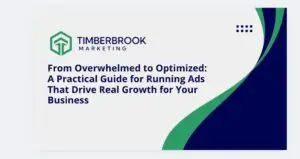In today’s digital landscape, email marketing remains one of the most effective tools for businesses, offering an impressive return on investment (ROI) compared to other channels. With the ability to deliver personalized, targeted messages directly to a user’s inbox, email marketing allows businesses to nurture leads over time, turning prospects into loyal customers. By consistently engaging audiences with relevant content, exclusive offers, and value-driven communication, email helps build lasting relationships and brand loyalty. Mastering email marketing is essential for business success, as it creates a direct, cost-effective line to potential and existing customers, driving conversions and long-term growth.
Understanding the Role of Email in Lead Generation
Building a targeted email list is crucial to successful email marketing, where quality far outweighs quantity. A small, engaged list of subscribers who are genuinely interested in your offerings will yield far better results than a large list of unengaged users. Growing your list with the right strategies—such as offering valuable lead magnets, creating dedicated landing pages, or using gated content to attract sign-ups—ensures you capture relevant leads. Best practices include optimizing sign-up forms and using compelling CTAs to encourage action. Once your list is built, segmenting it becomes key to driving engagement. By dividing subscribers based on demographics, behavior, or preferences, you can deliver personalized content, increasing open rates and click-throughs. Segmentation ensures your messages resonate with each audience segment, fostering deeper connections and improving conversion rates.
Crafting Engaging Emails That Drive Action
Writing irresistible subject lines is crucial, as they directly influence open rates—often determining whether your email gets read or ignored. To craft attention-grabbing subject lines, focus on being clear, relevant, and intriguing, using curiosity or urgency to entice readers. Incorporating personalization and emojis can also boost engagement. A/B testing different subject lines allows you to identify which styles resonate best with your audience, ensuring optimal results. Once the email is opened, its design plays a key role in engagement. A well-designed email balances text and visuals is mobile-optimized, and strategically places CTA buttons. Personalization within the email’s content, such as using the recipient’s name or tailored offers, can enhance relevance and connection. For the copy itself, clarity, brevity, and persuasion are essential. Techniques like storytelling or using social proof can make emails more relatable and trustworthy. Ultimately, a strong CTA that is clear, compelling, and action-oriented drives the reader to take the next step, converting interest into action.
Turning Leads Into Customers Through Email Automation
Email automation is a game-changer for lead nurturing, allowing businesses to engage with prospects and customers at the right time without manual intervention. Through automated workflows, such as welcome sequences and abandoned cart emails, you can deliver timely, relevant messages that keep leads engaged and guide them through the buyer’s journey. One of the most effective strategies is using drip campaigns—automated sequences of emails that gradually nurture leads by delivering valuable content over time. These campaigns work by consistently keeping your brand top of mind while educating prospects about your offerings. For example, a drip campaign might start with a welcome email, followed by educational content, special offers, and customer success stories, all designed to build trust and move the lead down the sales funnel. By offering helpful resources, answering questions, and addressing pain points, drip campaigns create meaningful connections that increase the likelihood of conversion.
Measuring Email Campaign Success
Tracking key metrics is essential for understanding the success of your email marketing campaigns. Important KPIs include open rates, which measure how many recipients opened your email; click-through rates, which show how many clicked on links within the email; and conversion rates, which indicate the percentage of recipients who completed a desired action, such as making a purchase. Analyzing these metrics helps you identify what’s working and where improvements are needed. A/B testing is a powerful tool in this process, allowing you to compare different elements of your emails—such as subject lines, designs, or CTAs—to see which versions perform better. For example, testing variations in email layout or button placements can reveal what drives higher engagement. By continuously refining your strategy based on data, you can improve future campaigns, boosting engagement, conversion rates, and overall ROI.
Avoiding Common Email Marketing Pitfalls
Avoiding common email marketing mistakes is crucial for maintaining engagement and building trust with your audience. Using spammy language, sending too many emails, or bombarding your subscribers with irrelevant content can lead to higher unsubscribe rates and reduced engagement. It’s essential to respect your audience’s inbox by carefully managing the timing and frequency of your emails. Sending relevant, valuable content at a reasonable pace keeps subscribers engaged without overwhelming them. Additionally, staying compliant with email marketing laws, such as GDPR and the CAN-SPAM Act, is critical. These regulations require transparency in your practices, such as obtaining proper consent, including opt-out options, and safeguarding customer data. By adhering to these laws, you not only avoid penalties but also demonstrate respect for your subscribers’ privacy, fostering long-term trust and loyalty.
Conclusion
Email marketing plays a vital role in every stage of the customer journey, from lead generation to conversion. It allows businesses to build targeted email lists, engage audiences with personalized content, and nurture leads with strategic campaigns, ultimately turning prospects into loyal customers. To make the most of email marketing, it’s important to implement best practices—such as segmenting your list, crafting compelling content, and using automation—and continually test and optimize your approach. By analyzing key metrics and refining your strategy, you can drive better results and maximize your ROI. Now is the time to take your email marketing strategy to the next level. Start applying these proven techniques and watch your email campaigns turn into powerful tools for growth and customer retention.






